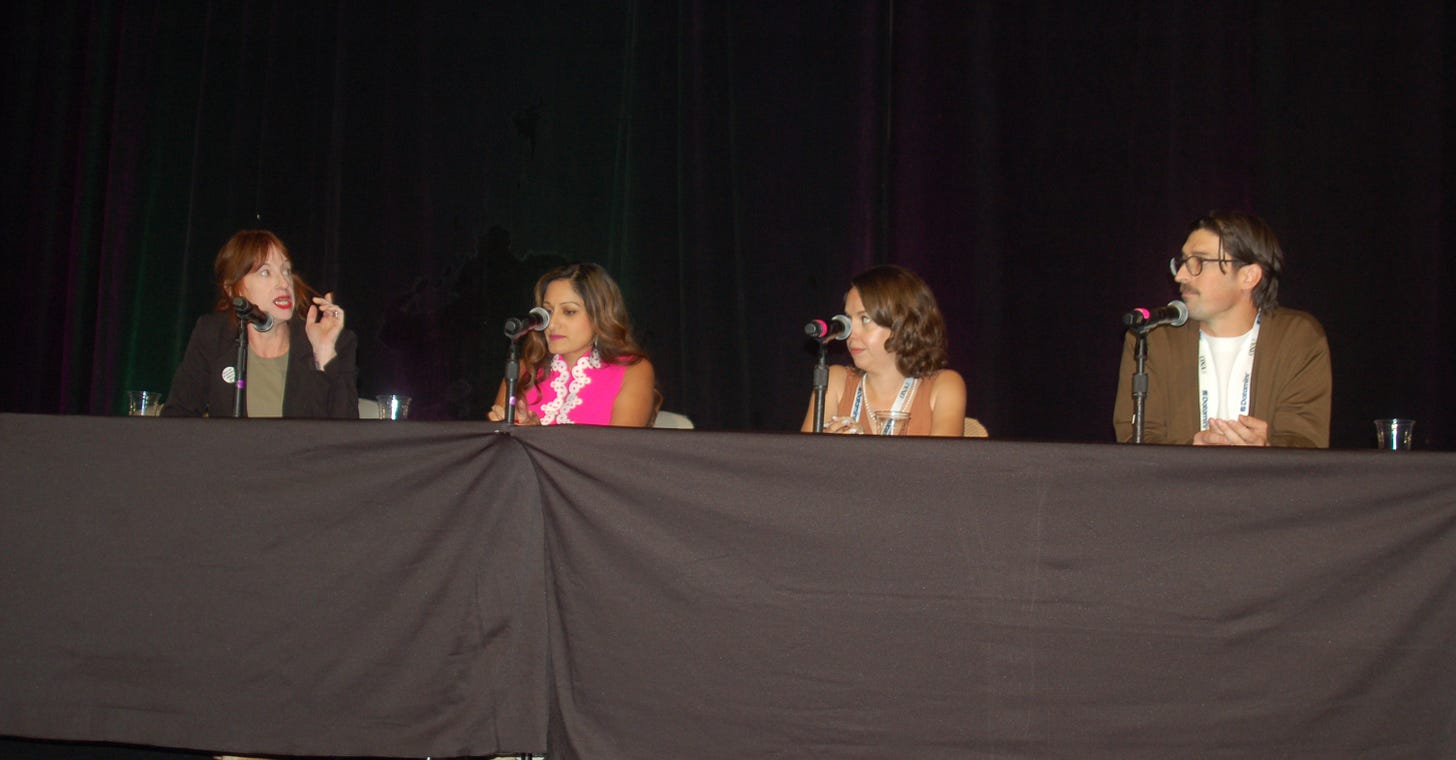Lessons for newsrooms about creator journalism from the Online News Association
Three key takeaways from attending my first major journalism conference.

History was made last week at ONA’s 25th annual conference.
For the first time, ONA devoted one of its seven “areas of practice” to “creator journalism & entrepreneurship.” And as a creator journalist, I was nervous being a part of this massive gathering of some of the best reporters in the industry, as my line of work and level of experience are very different from what most traditional journalists bring to the table.
Luckily, I wasn’t alone.
Project C, an organization that supports creator journalists founded by Liz Kelly Nelson, brought in a cohort of 10 independent reporters for training and courses on how to transition into creator journalism.
Through their cohort, along with the six panels and workshops about creator journalists, I could feel the representation of the creator landscape and, more importantly, the growing desire for newsrooms, especially local ones, to do better on social media. It was breathtaking to see traditional reporters and newsroom leaders sitting alongside creator journalists and audience-engagement experts, listening, learning, and starting to grasp what it really takes to build and sustain an audience on social media.
After three days of panels, hallway conversations, and more than a few late-night debates, here are my biggest lessons about creator journalism for newsrooms and journalists.
Journalism is now a dialogue, not a monologue.
Traditional journalists often treat their stories as a "finished product.” Creator journalists see it differently; their content is one of many connection points with their audience. The focus isn’t on simply pushing out stories, but on building relationships and adapting to what their community actually needs.
Matt Kiser, author of “What the Fuck Just Happened Today?”, which now has 250,000 subscribers, explains that he doesn’t just hit “send” on his newsletter and moves on; he replies to readers, sometimes getting pulled into entire email threads among family members who share his work. He is actively looking to hear feedback and make his work better on a daily basis.
“We are in the relationship business,” Kiser said. “We’re not here to create products. We’re here for our community.”
Consistency and volume outweigh perfection.
Although video journalism isn’t new, the way it appears on social platforms today looks very different. On TikTok, Instagram, and YouTube Shorts, vertical video formats dominate, such as skits, “get ready with me” clips, and live interviews. More importantly, success is no longer measured by high-quality production, but by reach, including views, subscribers, engagement, and the ability to connect with an audience.
As Nieman-Berkman fellow Ryan Kellett noted, citing his data and research, “the lower-quality video wins because the higher-quality one looks like an ad.” That doesn’t mean journalists should aim to make bad videos. It means the focus has shifted. What matters most is the reporting and the connection a video can build — not the polish of the edit or the “newsroom feel,” especially because many creator journalists don’t have the benefit of having a full team of editors.
If you care about people, you are a journalist.
A common theme among creator journalists is imposter syndrome—the persistent sense that they don’t fully belong as real journalists. Many who left traditional newsrooms worry that because their work lives on social media, it will be dismissed or discredited. This is also true for reporters within newsrooms who want to embrace creator-style content (skits or direct-to-camera explainers), but find it too far removed from what they were taught in journalism school.
But journalist Laura Weffer, who was a part of Project C’s cohort and is the founder of “Esta Es La Cosa,” a bilingual news and storytelling platform focused on Georgia, offered a reminder that helped her colleagues cut through the doubt: “If you care about people, you are a journalist.” Her words underscore a theme shared by both traditional and creator journalists—that this work is more than a job. It is a vocation. A public service. And it is the backbone of our democracy.
The way forward
Two weeks ago, I wrote about why the news industry needs to care about creator-model journalism. From ONA, it’s clear the interest is there—the desire to understand the creator landscape is real. And I’m grateful to see this year’s programming as a stepping stone for what could come next.
But the urgency to fund creator journalists among philanthropic and corporate donors still isn’t there.
Right now, news influencers dominate the ecosystem. And unless more journalists adapt their strategies to social media, they will continue to dominate. Just as journalism needs a seat at the table in the AI conversation, it also needs one in how news is consumed on social platforms. Creator journalism is another way to rebuild trust with the public and to help people make sense of the issues that most affect their lives.



Thanks so much for sharing this reflection, Rahim! Love the emphasis on community and genuine two-way connection.